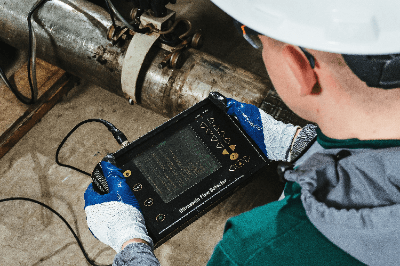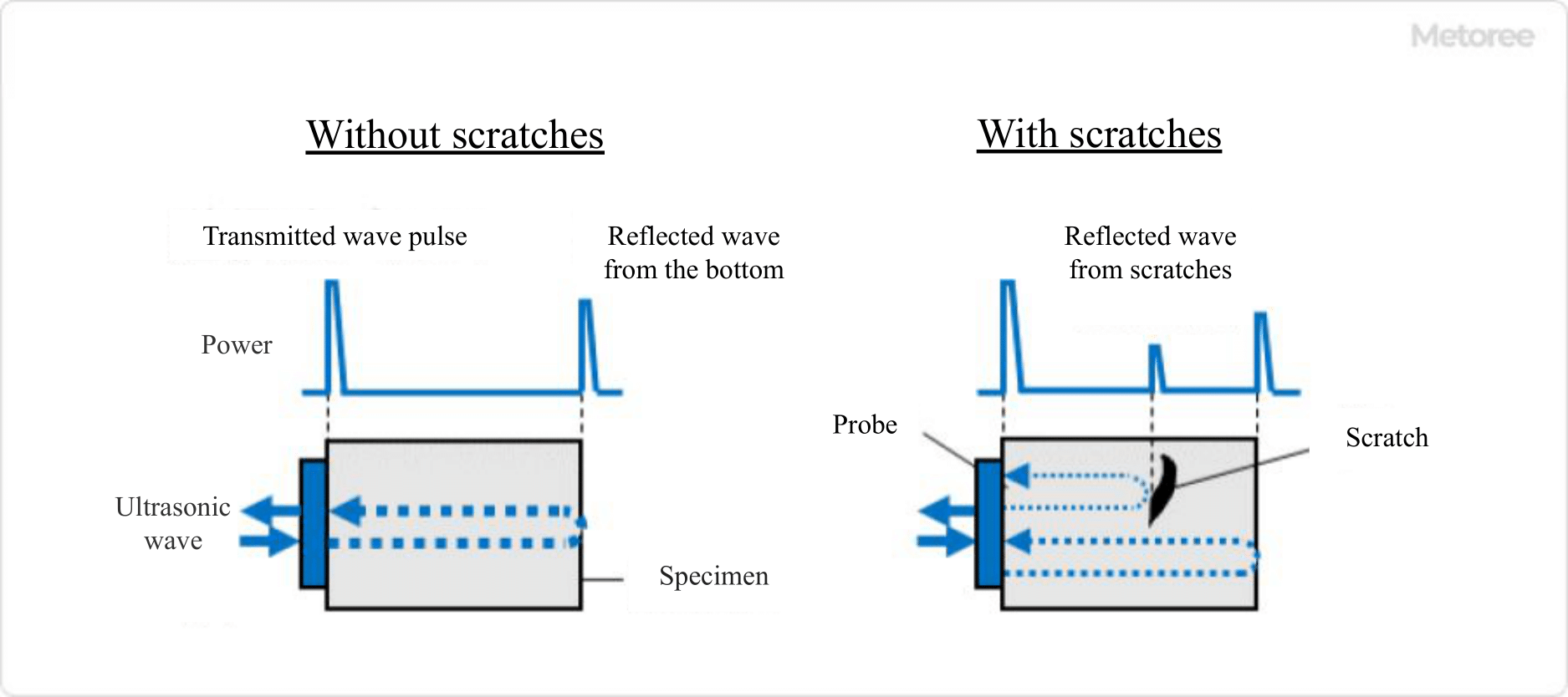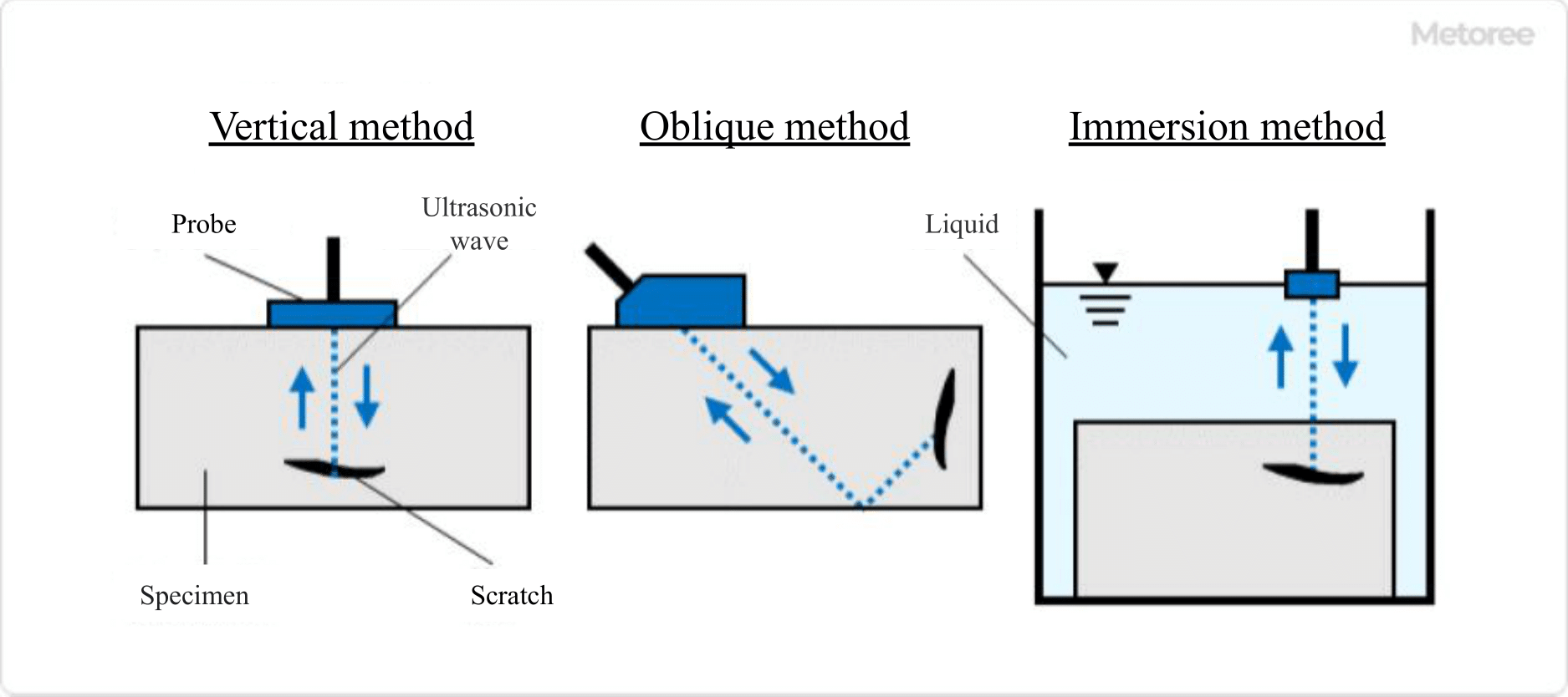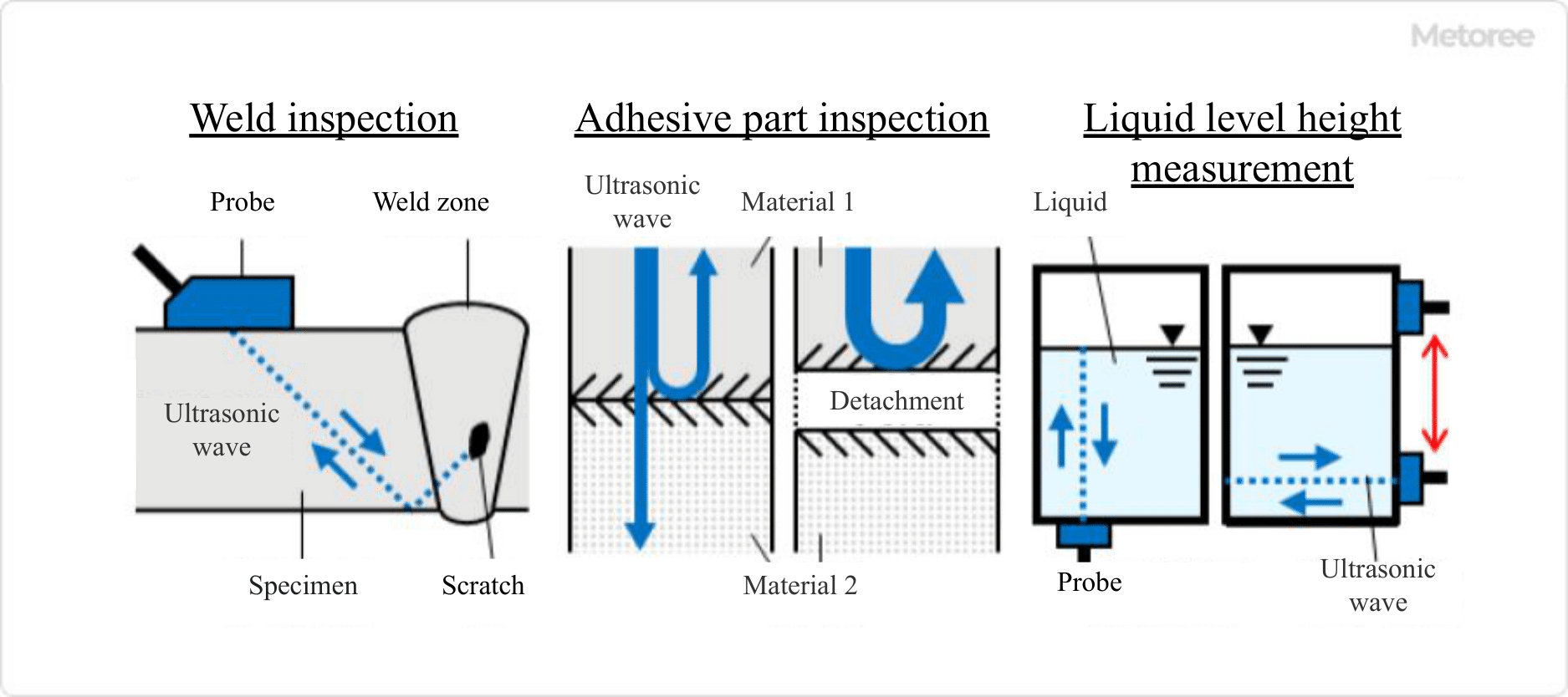What Is an Ultrasonic Flaw Detector?

An ultrasonic flaw detector is a device that can measure internal flaws using ultrasonic waves.
It is used in various places as a nondestructive inspection device because it can check internal flaws without having to make an incision in the object. Ultrasonic waves are applied from the surface of the object to detect damage, and the sound waves reflected through the interior of the object are detected. It is possible to check not only the presence or absence of scratches, but also their location and size, and is used to inspect for defects in the manufacturing process of various products.
Uses of Ultrasonic Flaw Detectors
Ultrasonic flaw detectors can measure flaws that occur in various locations.
An example is the measurement of defects during welding. Welding is a method of joining parts by melting metal, and while it is an essential process for manufacturing industrial products, it is often performed by hand and is prone to human error and defects. To prevent serious accidents from occurring, quality inspections are conducted using ultrasonic flaw detectors.
It is also used to check the bonding condition: when two identical materials are bonded, ultrasonic waves penetrate the boundary surface and do not bounce back, but if there is delamination, they will be reflected in that area. By detecting this, the state of adhesion can be checked.
Principle of Ultrasonic Flaw Detectors

Figure 1. Principle of ultrasonic flaw detector
The ultrasonic flaw detectors use the reflection of ultrasonic waves to identify the presence, position, size, etc. of flaws, and the principle is called the pulse reflection method.
A probe capable of transmitting and receiving ultrasonic waves is placed on the surface to be inspected. The ultrasonic waves incident on the object from the probe are reflected by the bottom surface or internal flaws and then returned to the probe. By observing this reflected wave, the condition of the inside of the inspection object can be estimated.
If there is a flaw inside, the received waves are observed in the order of the transmitted wave pulse, the reflected wave from the flaw, and the reflected wave from the bottom surface. The position and size of the flaw are estimated from the time it takes for the waves to be observed and the strength of the waves.
Other Information on Ultrasonic Flaw Detectors
1. Classification of Ultrasonic Flaw Detectors

Figure 2. Classification of ultrasonic flaw detector
There are several types of ultrasonic flaw detectors.
Depending on the angle of incidence of the waves, they can be classified into two methods: the vertical method, in which the waves are incident perpendicular to the object to be inspected, and the oblique method, in which the transverse waves are incident obliquely to the object to be inspected. The oblique method is especially used for inspecting welds.
Depending on whether the probe is applied directly to the inspection object or not, the two methods can be classified into two types: the direct contact method, in which the probe is directly applied to the inspection object, and the water immersion method, in which the inspection object is submerged in a liquid and ultrasonic waves are injected through the liquid. The water immersion method can be further classified into the full immersion method and the partial immersion method.
2. Example of Inspection Using Ultrasonic Flaw Detector

Figure 3. Example of inspection using an ultrasonic flaw detector
Ultrasonic flaw detectors can be used in various ways depending on its intended use. Typical uses are as follows
1. Inspection during welding
Ultrasonic flaw detectors are used to inspect defects such as shape defects and metal cracks that occur during welding. When applying ultrasonic waves, the ultrasonic waves are applied to the weld area from an angle to check for defects. To avoid missing any defects by applying ultrasonic waves at an angle, the ultrasonic waves are reflected once on the backside of the object and then applied to the object.
2. Inspection of bonded area
When two materials are bonded, ultrasonic waves are applied to them to check whether the bonding is sufficient. If the same materials are sufficiently bonded, ultrasonic waves will not be reflected, but if there is a gap due to peeling in the bonded area, ultrasonic waves will be reflected, allowing the accuracy of the bond to be checked.
In the case of different materials, reflection always occurs at the boundary surface, and if delamination occurs, the phase of reflection is shifted or reversed, which can be confirmed as a defect.
3. measurement of the liquid level height of liquid sealed in a container
For liquids that easily vaporize or hazardous chemicals, it is necessary to measure the presence or absence and quantity of the contents in a sealed container without opening it.
The ultrasonic testing device is used to apply ultrasonic waves from the bottom of the container. The ultrasonic waves travel through the liquid and are reflected at the liquid surface, so the volume can be measured from the height of the solution’s water surface.